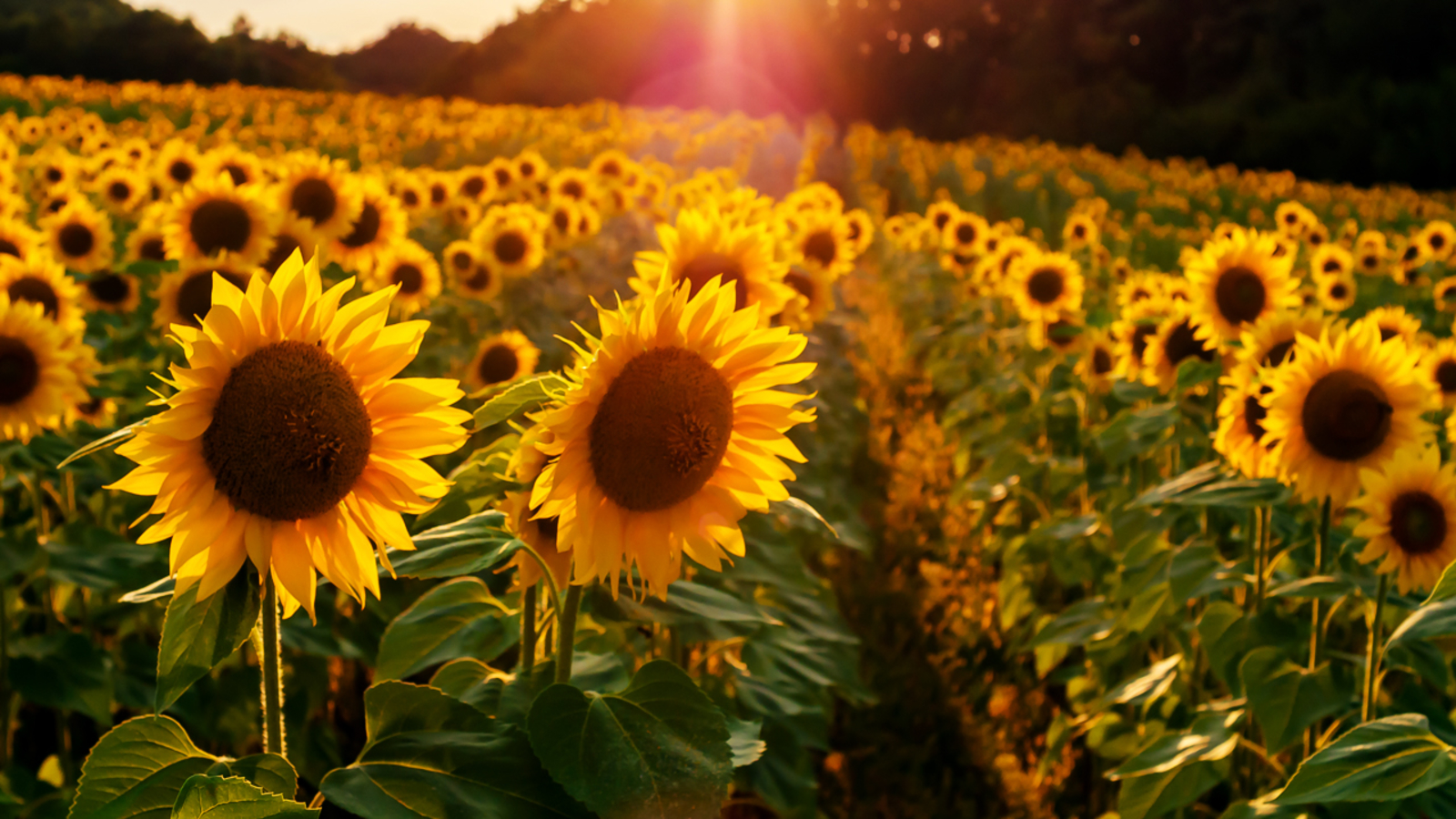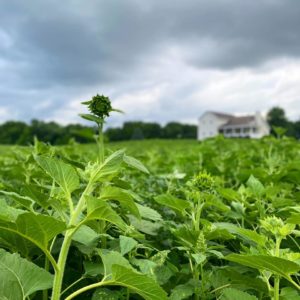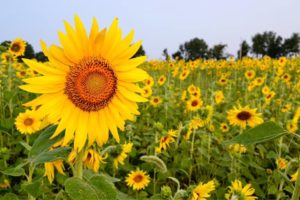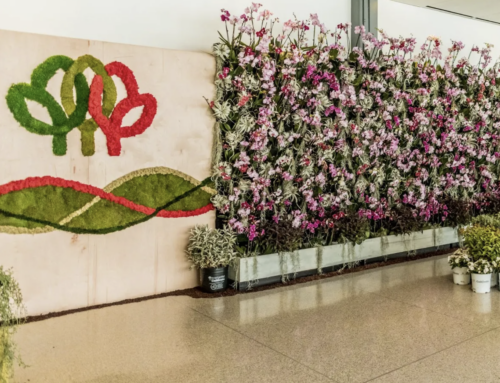As summer winds down, many of us are beginning to see big, bright, bold, yellow sunflower fields all around town! This time of year their tall green stalks have bloomed to give the summer sun a wave goodbye.
- Photos from Gorby Sunflowers in Allegan, MI
The giant single-headed varieties tend to bloom near the end of summer and last for around 2-3 weeks (which we are experiencing right now). The smaller or multi-headed varieties bloom earlier in the summer and can last throughout the season if they are well taken care of & deadheaded regularly.
Aside from being aesthetically pleasing and nice to look at, sunflowers bring many benefits to one’s garden.
Reasons to grow them:
- To feed your pollinators
- Their seeds are edible and good for your health
- For their beautiful flowers (cut or uncut)
- The petals make a nice addition to a cup of tea
- They attract birds to your garden, which help keep pests away
- Sunflowers can absorb toxic contaminants and chemicals, detoxing the soil
- In general, they enrich the soil around them
- They make a suitable companion for other plants, fruits, and veggies to grow next to
- Its oil can be used for a variety of things- cooking, skin, etc.
How to harvest seeds:
The brown middle part of your sunflower will mature into a “seed head” after all of the petals have fallen off. You can then harvest them and eat them, or save them to plant next year.
To prepare your seeds for eating:
- Let the flower dry until the back of the head is brown and the seeds look larger and plump.
- Tip – to keep birds, squirrels, and other animals from eating the seeds while drying, cover the flower head with a paper bag, cheesecloth, fleece, etc.
- Lastly, brush your hand over the seed head to knock them off.
To prepare them for planting next spring:
- Store them in an airtight container
- Keep them in a dry and cooler place
Be sure to follow our blog and check in next spring for some tips on how and when the best time to plant your seeds are!
As summer winds down, many of us are beginning to see big, bright, bold, yellow sunflower fields all around town! This time of year their tall green stalks have bloomed to give the summer sun a wave goodbye.
- Photos from Gorby Sunflowers in Allegan, MI
The giant single-headed varieties tend to bloom near the end of summer and last for around 2-3 weeks (which we are experiencing right now). The smaller or multi-headed varieties bloom earlier in the summer and can last throughout the season if they are well taken care of & deadheaded regularly.
Aside from being aesthetically pleasing and nice to look at, sunflowers bring many benefits to one’s garden.
Reasons to grow them:
- To feed your pollinators
- Their seeds are edible and good for your health
- For their beautiful flowers (cut or uncut)
- The petals make a nice addition to a cup of tea
- They attract birds to your garden, which help keep pests away
- Sunflowers can absorb toxic contaminants and chemicals, detoxing the soil
- In general, they enrich the soil around them
- They make a suitable companion for other plants, fruits, and veggies to grow next to
- Its oil can be used for a variety of things- cooking, skin, etc.
How to harvest seeds:
The brown middle part of your sunflower will mature into a “seed head” after all of the petals have fallen off. You can then harvest them and eat them, or save them to plant next year.
To prepare your seeds for eating:
- Let the flower dry until the back of the head is brown and the seeds look larger and plump.
- Tip – to keep birds, squirrels, and other animals from eating the seeds while drying, cover the flower head with a paper bag, cheesecloth, fleece, etc.
- Lastly, brush your hand over the seed head to knock them off.
To prepare them for planting next spring:
- Store them in an airtight container
- Keep them in a dry and cooler place
Be sure to follow our blog and check in next spring for some tips on how and when the best time to plant your seeds are!







